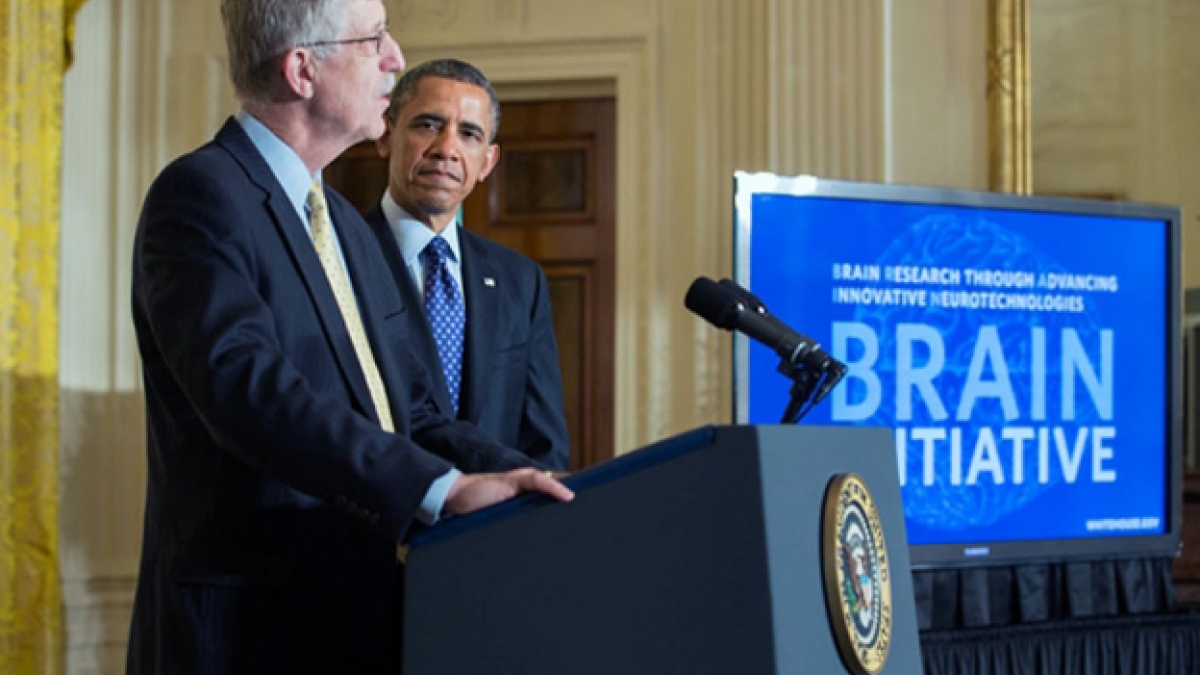Obama's BRAIN Initiative presents significant opportunities for ASU

President Barack Obama proposed a new initiative designed to revolutionize our understanding of the human brain in a speech at the White House on Tuesday. The BRAIN (Brain Research through Advancing Innovative Neurotechnologies) Initiative aims to help researchers find new ways to treat, cure and even prevent brain disorders, such as Alzheimer’s disease, epilepsy and traumatic brain injury.
The initiative is launching with approximately $100 million in funding for research supported by the National Institutes of Health ($40 million), the Defense Advanced Research Projects Agency ($30 million) and the National Science Foundation ($20 million) in the President’s Fiscal Year 2014 budget.
Private sector partners, including the Allen Institute for Brain Science, Howard Hughes Medical Institute, Kavli Foundation and Salk Institute for Biological Studies, have also made important commitments to further the BRAIN Initiative, totaling more than $125 million in investments.
The BRAIN Initiative supports the vision that Obama outlined in his 2013 State of the Union Address, in which he stated, “If we want to make the best products, we also have to invest in the best ideas….Now is the time to reach a level of research and development not seen since the height of the Space Race.”
Sethuraman (Panch) Panchanathan, the senior vice president for Knowledge Enterprise Development at Arizona State University, joined a select group of scientists and university leaders attending the president’s speech this week. Earlier this year, Panchanathan was invited to be part of an eight-member panel to share their expertise with the White House Office of Science and Technology Policy (OSTP) in exploring ways to improve “convergent” science – research at the intersection of the life sciences, the physical sciences and engineering.
In the OSTP report, Panchanathan emphasized the importance of interdisciplinary/transdisciplinary solution-based approaches for solving grand challenges faced by society, strong synergistic corporate partnerships, enlightened intellectual property policies and a robust culture of entrepreneurship.
The BRAIN Initiative will rely heavily on transdisciplinary research, integrating the latest science to accelerate discovery. The human brain is made up of 100 billion neurons with 100 trillion different connections. Its sheer complexity presents an enormous challenge to scientists trying to find the causes and treatments of brain disorders. A White House press release notes that breakthroughs in treating neurological and psychiatric diseases will require a new generation of tools for recording signals from brain cells in much greater numbers and at even faster speeds.
“Great promise for developing such technologies lies at the intersections of nanoscience, imaging, engineering, informatics, and other rapidly emerging fields of science and engineering,” the release states.
A group of scientists from Arizona’s three state universities, major medical centers and the biotechnology industry are now working to leverage the state’s pool of expertise in brain research.
“The BRAIN initiative is a fantastic opportunity to bring basic, translational and applied research that is inherently transdisciplinary in nature together to achieve societal and economic impact. This offers numerous opportunities for ASU faculty and students, and for Arizona as a whole,” says Panchanathan.
He adds: “In addition to work at ASU in the areas of neuroscience and neurorehabilitation, it also presents new potential to collaborate with partners like Banner Health and Banner’s Alzheimer’s Institute, Barrow Neurological Institute, University of Arizona, Phoenix Children’s Hospital, TGen and Mayo Clinic.”
More information:
Fact sheet: http://www.whitehouse.gov/the-press-office/2013/04/02/fact-sheet-brain-initiative
President's remarks: http://tinyurl.com/cqjvgql